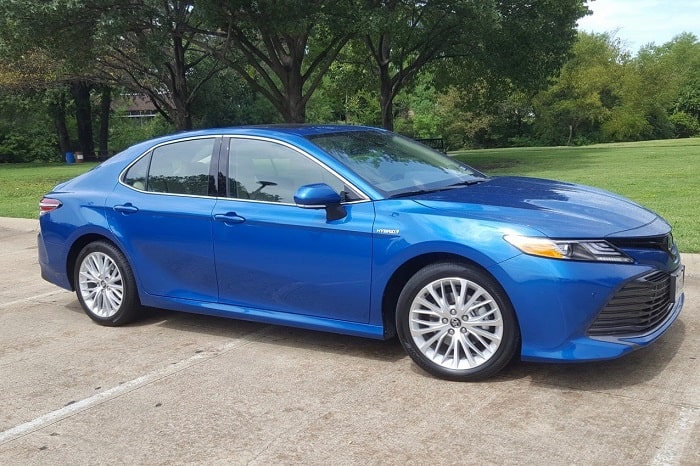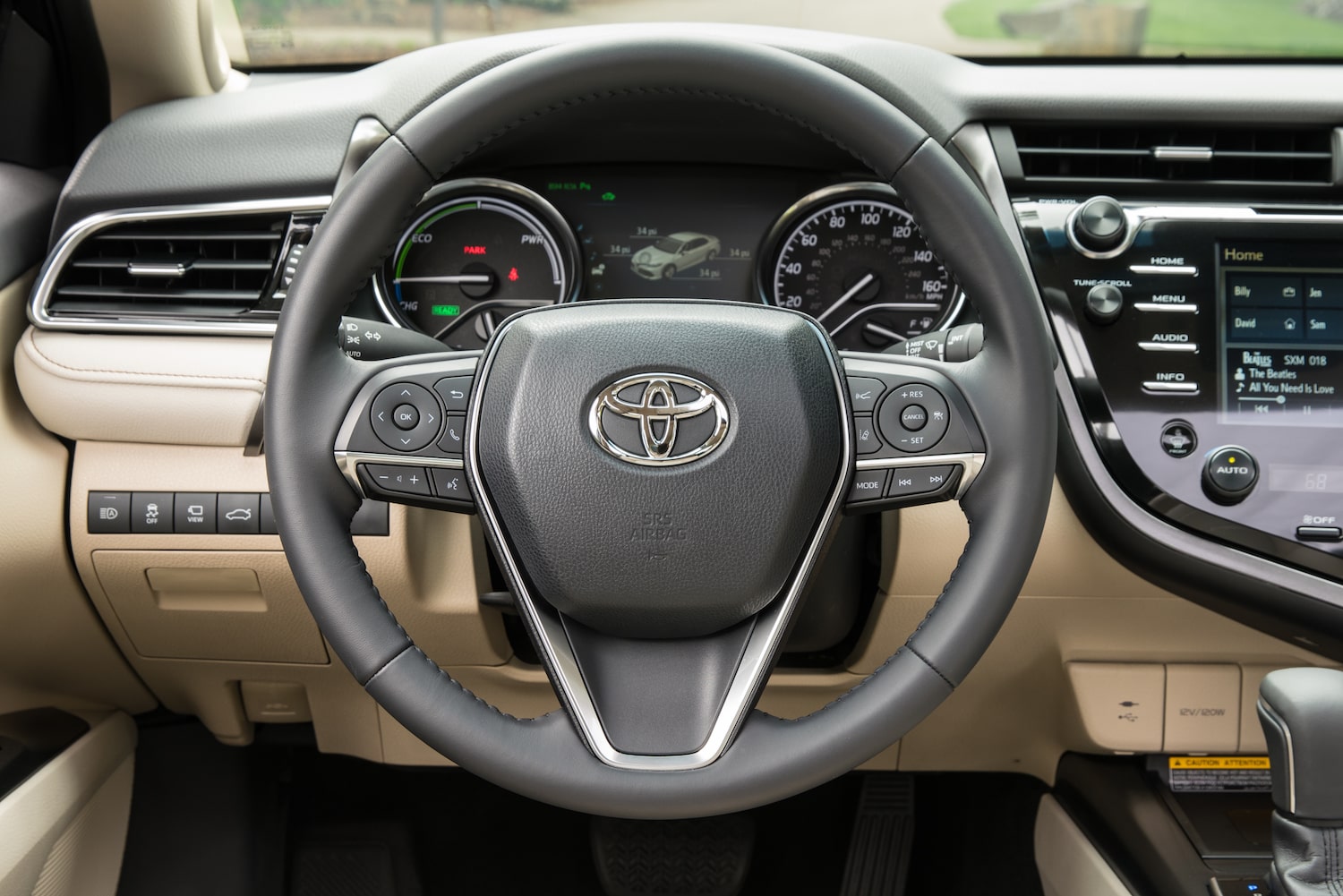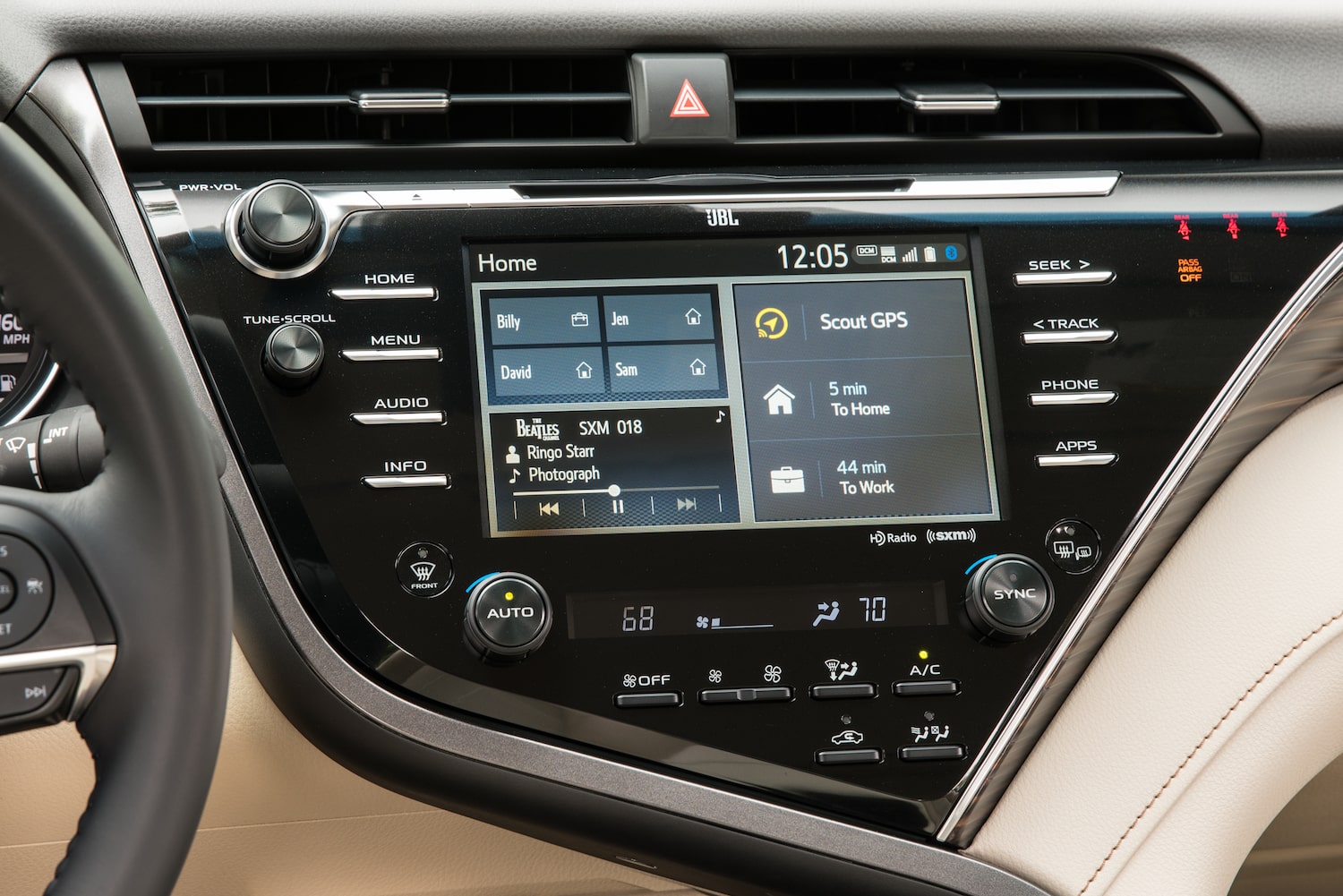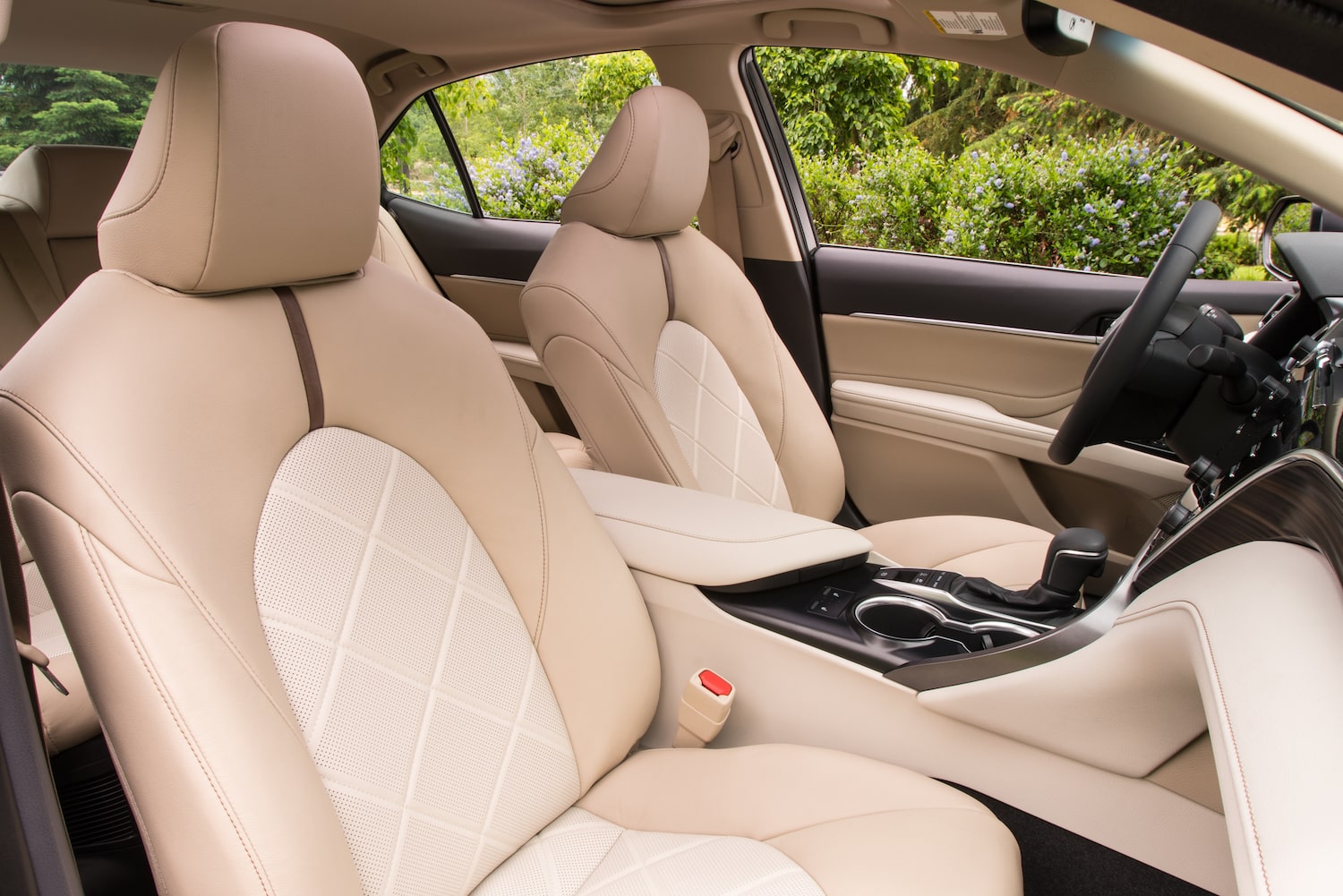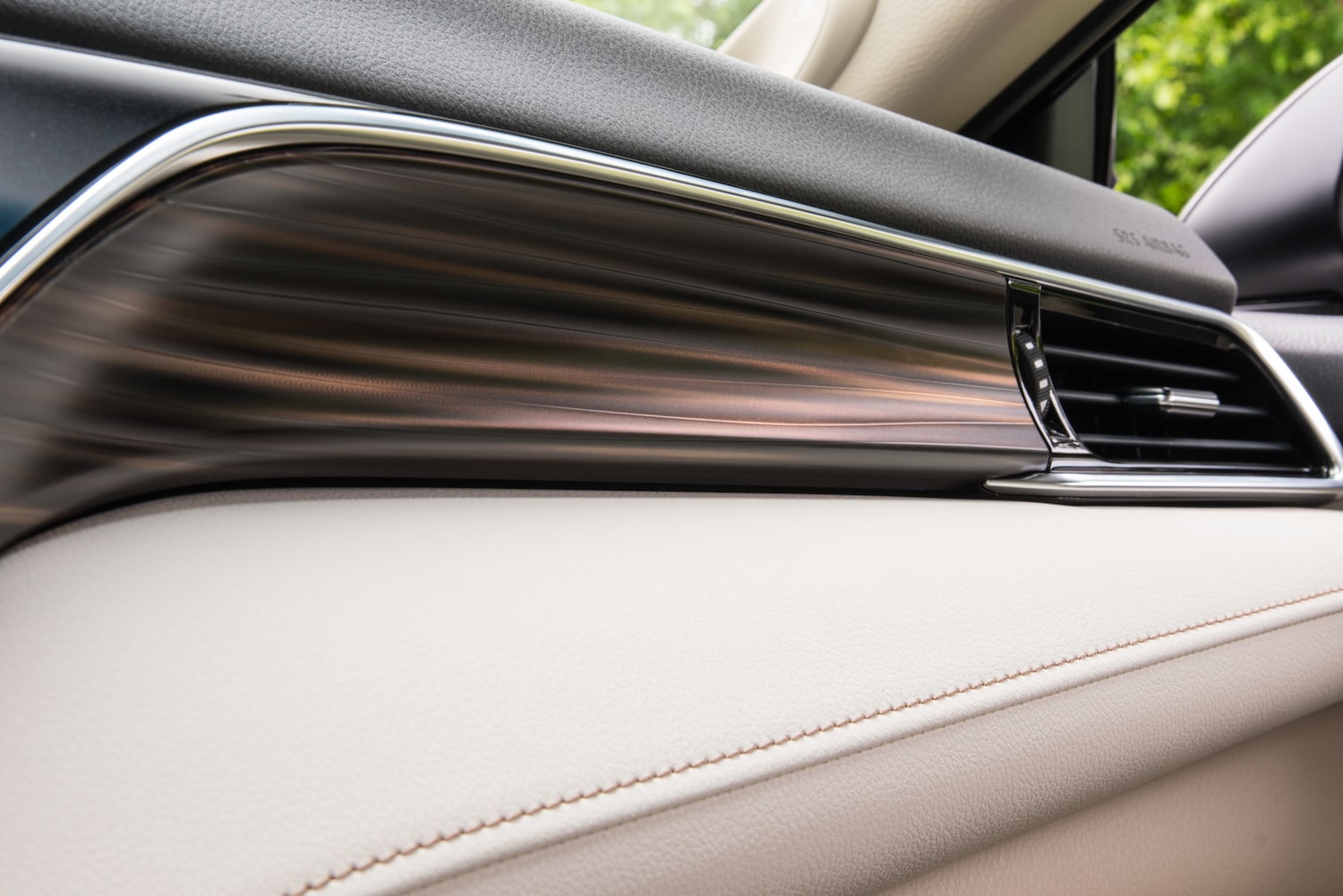Bland sedans don’t attract long-term fans.
Just ask Toyota. After years of building mid-sized Camry sedans that seemed about as exciting as pulling weeds, the automaker gave the top-selling Camry new vitality in 2018.
Most of that infusion of life came from stiff new architecture being used on most Toyota models now, as well as improved styling.
Both made the 2020 Camry Hybrid XLE I had two weeks ago a much better vehicle than it was a few years ago -- and none too soon.
As you probably heard, sales of mid-size sedans – once the most vibrant car segment in the auto industry – have been sliding for years, plunging a worrisome 31 percent in the first half of the year.
Although the Camry remains the best-selling mid-sizer in the U.S., its sales dropped 28 percent in the first half as buyers continued to opt for crossovers and SUVs.
None of that seemed to faze my Nassau blue Camry sparker, a 3,500-pound, five-passenger gas-electric sedan capable of 46-mile-per-gallon overall fuel economy.
While hardly the most exciting model in the rejuvenated Camry line, the Hybrid never felt emasculated – as it once did.
I even came to mildly appreciate its looks, once I got past the car’s silly sophomoric front grille, which would probably work great on a giant vacuum cleaner.
At least the one on the Camry Hybrid was cast in dark gray, which for some reason made it seem less industrial.
Meanwhile, a broad, sculpted hood topped sides that, for a Toyota, looked relatively lean and clean.
A prominent character line through the door-handles and a second line along the lower body gave the Camry a lightly carved look, aided by slightly flared fender wells and a sleekly curving top.
Moreover, the car settled on silver 18-inch turbine-style wheels wrapped with 235/45 tires that kind of gave it a dash of German.
Actually, though, the Camry Hybrid looked much sportier than it was. For now, Toyota reserves its best performance tuning for the RAV4 Hybrid, which can easily outrun regular gas models of the compact crossover.
With its 2.5-liter four-cylinder engine assisted by an electric motor, the front-wheel-drive Camry generates a modest total of 208 horsepower working through a continuously variable transmission (CVT).
It wasn’t exactly a formula for excitement, but at least the $39,000 Hybrid was no slower than the conventional four-cylinder gas Camry.
In typical hybrid fashion, the Camry started silently, pushing smoothly away from stops with its electric motor before being joined by the gas engine at about 30 mph.
The handoff was mostly invisible, though the gas engine gets more audible under hard acceleration, with the hefty sedan jogging to 60 mph in an adequate 8 seconds or so.
Likewise, the Camry negotiated moderate-speed corners with a bit of body lean and decent, albeit numb, steering.
You won’t mistake it for a 3-series BMW – even in flashy paint -- though the Camry does ride decidedly better than the Bimmer.
Still, the roomy sedan will satisfy most buyers, providing sophisticated, responsive driving manners and reasonable performance.
Also, the Camry didn’t have those grabby regenerative brakes that can make driving a hybrid doubly irritating.
The challenge for the Camry Hybrid is it’s about $3,000 more expensive than a conventional four-cylinder Camry XLE and only gets four to five miles per gallon better in overall fuel economy.
Hmmm. I’d say the Camry Hybrid needs some spark from the RAV4 Hybrid to give it more distinction.
And who knows? Toyota might even be open to that possibility.
My Camry flashed an off-white interior that had bold tones of the ‘60s in it while also giving the Hybrid an unexpected groove – sort of like a hardware-store manager in a white suit.
I liked it. A flat-black upper dashboard in nicely textured plastic dropped onto a swoopy mid-dash featuring a 7-inch, flush-mounted display screen.
Highly functional knobs and switches controlled the audio and infotainment systems, which were Android Auto and Apple CarPlay compatible.
Like most Toyotas, the Camry also offered a suite of safety systems, including pedestrian detection, active cruise control, lane-departure alert and brake assist.
The car’s door-panels were more interesting to me, cast in decent black plastic and enlivened with off-white inserts.
Toyota even sprung for a white headliner, complementing the off-white bucket seats with perforated centers.
Of course, as you would expect in a family-friendly mid-size sedan, the back seat provided generous leg- and head-room.
The big sedan arrived with about $6,000 in options, including a driver-assist package ($2,375); navigation package ($1,810); and power moonroof ($860).
It wasn’t quite enough to sway me, though, because I know the thoroughly decent Camry Hybrid could and should be better.
Toyota is the expert in hybrid technology. So, c’mon, Toyota. Turn it loose on the Camry and really make it glow.
2020 Toyota Camry XLE Hybrid Review
- What I liked most: The Camry’s solid, confident new platform and composed driving manners.
- What I would change: Simple – let the RAV4 engineers retune and liven up the Camry’s hybrid-drive system.
- MSRP: Base price, $32,550; as equipped, $39,423.
- Official color: Blue Streak Metallic.
- Fuel economy: 44 miles per gallon in the city, 47 on the highway and 46 mpg combined with filler on the left.
- Odometer reading when tested: 9,554 miles.
- Spare tire: Temporary compact.
- Weight: 3,472 pounds.
- Length-width-height: 194.6 inches long/73.1 inches wide/56.3 inches tall.
- Fuel-tank capacity: 13.2 gallons.
- Towing capacity: Not applicable.
- 2020 Toyota Hybrid in a few words: Another reminder of how good average cars have gotten and how much further they can still go.
- Warranty: Three-year, 36,000-mile overall warranty and five-year, 60,000-mile powertrain warranty.
- Final assembly location: Georgetown, Ky.
- Manufacturer’s website: www.toyota.com
- Up next: 2020 Mazda MX-5 Miata
